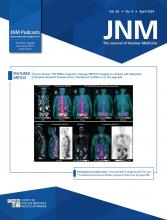Abstract
Rationale: Artificial intelligence may improve accuracy of myocardial perfusion imaging (MPI) but will likely be implemented as an aid to physician interpretation rather than an autonomous tool. Deep learning (DL) has high standalone diagnostic accuracy for obstructive coronary artery disease (CAD), but its influence on physician interpretation is unknown. We assessed whether access to explainable DL predictions improves physician interpretation of MPI. Methods: We selected a representative cohort of patients who underwent MPI with reference invasive coronary angiography. Obstructive CAD, defined as stenosis ≥ 50% in the left main artery or ≥70% in other coronary segments, was present in half of patients. We utilized an explainable DL model (CAD-DL), which was previously developed in a separate population from different sites. Three physicians interpreted studies first with clinical history, stress, and quantitative perfusion, then with all the data plus the DL results. Diagnostic accuracy was assessed using area under the receiver-operating characteristic curve (AUC). Results: In total, 240 patients were included with median age 65 (IQR 58 – 73). The diagnostic accuracy of physician interpretation with CAD-DL (AUC 0.779) was significantly higher compared to physician interpretation without CAD-DL (AUC 0.747, P = 0.003) and stress total perfusion deficit (AUC 0.718, p<0.001). With matched specificity, CAD-DL had higher sensitivity when operating autonomously compared to readers without DL results (p<0.001), but not compared to readers interpreting with DL results (P = 0.122). All readers had numerically higher accuracy with the use of CAD-DL, with AUC improvement 0.02 to 0.05, and interpretation with DL resulted in overall net reclassification improvement of 17.5% (95% CI 9.8% – 24.7%, p<0.001). Conclusion: Explainable DL predictions lead to meaningful improvements in physician interpretation; however, the improvement varied across the readers reflecting the acceptance of this new technology. This technique could be implemented as an aid to physician diagnosis, improving the diagnostic accuracy of MPI.
- Copyright © 2022 by the Society of Nuclear Medicine and Molecular Imaging, Inc.







